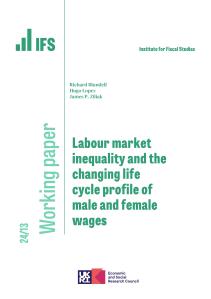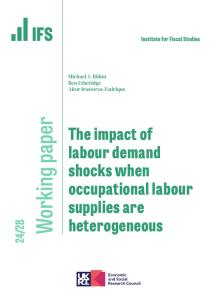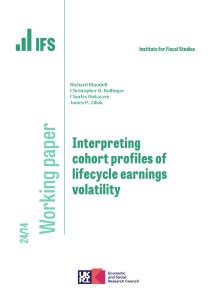The last four decades represent a distinct era in the history of globalisation. Since 1980, there has been rapid growth in global merchandise trade, an extraordinary increase in the importance of low-income countries in world trade, a large increase in trade imbalances across exporting and importing countries, and a growing internationalisation of firms’ supply chains. All of these changes were most evident in the 1990s and 2000s – coinciding with China’s rapid emergence as a manufacturing and exporting powerhouse.
These trends have, however, slowed since the financial crisis. In more recent years, trade barriers and tensions have both been rising, threatening further shifts in trade patterns that might benefit some and harm others. Both the Biden and Trump administrations have taken a confrontational stance in their trading relations with China. The UK is experiencing a reshaping of its trading arrangements in the light of Brexit. The pandemic may also have lasting impacts.
What does history tell us about what these shifts in trade patterns might mean for workers – and inequality – in countries such as the US and UK?
We now know from many detailed studies, summarised in a new chapter for the IFS Deaton Review, that sudden changes in trade patterns can have profoundly uneven effects across the populations of developed economies. For example, the rapid growth in Chinese manufacturing imports in the 2000s led to declines in employment and wages of workers in trade-exposed industries – particularly amongst lower-paid workers. The labour market impacts of import competition were also reflected in social outcomes and attitudes. Studies have linked greater exposure to import competition to various negative outcomes at the level of localities, including: greater increases in crime rates, a deterioration of health outcomes, greater dissolution of traditional family structures, and greater support for far-right political parties.
These impacts reflect the fact that workers affected by shocks take a long time to find new work, move to new locations, or retrain in response to local employment changes. It took some years for economists to register the importance of these ‘frictions’ for understanding trade’s distributional impacts. Simple models of trade’s impacts on inequality, in which workers displaced by trade can costlessly find new employment, suggest that its impacts should be evident in the wage gap between high- and low-skilled workers – and so this is where economists looked. Studies conducted in the 1990s and 2000s did not find that trade played an important role in explaining trends such as the growth in the wage premium of university-educated workers, and they therefore concluded that trade’s impacts on the labour market were small. However, these earlier studies missed the impacts on inequality between areas that specialised in different industries or within groups of workers with similar qualifications, both of which turned out to be crucial. For example, a study of
the impact of increased Chinese imports in the UK found that manufacturing workers at the 75th percentile of exposure to Chinese imports accumulated 3.1% lower annual earnings during the years 2000–07 than workers at the 25th percentile.
At the same time as displacing some workers, import competition reduced prices for consumers, many of whom therefore benefited from increasing globalisation. For example, in the UK, rapid growth in Chinese imports of textiles, apparel and technology goods was associated with greater price declines for these items. Over the period 1999–2007, a time when Chinese imports to the UK were growing rapidly, Chinese imports reduced annual costs per family by around £400 (2001 prices). However, the gains from these reduced prices were distributed relatively evenly across groups. While the poor benefited disproportionately more from lower clothing prices, the rich tended to benefit relatively more from lower prices for electronics. Thus, these price reductions do not appear to have mitigated the impacts of import competition on inequality over this period.
At the same time as seeing greater price declines, industries exposed to greater import competition also saw larger falls in employment; we estimate that Chinese import competition displaced between 200,000 and 350,000 workers from 1999 to 2007.
The experience of the last four decades contains important lessons for the future. One thing that is clear is that sudden shifts in trade patterns can have particularly damaging and persistent impacts on the employment and earnings of certain workers. This is especially true for the low-paid and for workers or skills very specific to their current industry. Trade shocks can also have very different impacts on different areas, particularly owing to the regional concentration of tradable industries. Government policies can play a role in helping those people and places but these policies need to be designed with care; many have failed to show clear evidence of being effective. In principle, protective trade policy could help give workers and firms time to adjust to rapid import growth, but such policies prevent consumers from reaping gains from reduced prices. They also create labour market disruptions of their own for workers in industries that purchase their inputs from abroad, and by provoking retaliatory measures from other countries.
What might all this mean for UK policy post-Brexit? One of Brexit’s consequences is, of course, an increase in trade barriers between the UK and the EU. Inevitably, some workers will win and others will lose out. Modelling suggests that workers in several manufacturing industries will lose out, as the costs of more expensive production inputs and reduced export opportunities outweigh the benefits from reduced competition from EU imports. Worryingly, these workers have similar characteristics to those affected by previous trade shocks. While the exact manufacturing industries affected may be different from those hit by Chinese import competition in the 2000s, workers who are more exposed also tend to be less likely to hold formal qualifications and tend to be working in locally concentrated industries. For example, concerns have been raised about Brexit’s impacts on the car industry, which accounts for up to 10% of private sector employment in certain areas.
One of the problems with Brexit, as with the China shock, is that it may have effects that are relatively quick to appear, therefore giving firms and workers limited time to adapt. Economies do adapt, but a clear lesson from recent experience is that this can take time, and transitions should be carefully managed.
The ultimate impacts of Brexit on different workers are yet to be revealed, depending as they do on what the costs imposed by new regulatory barriers are, and how exactly they will affect different industries. Nonetheless, the UK government will need to pay close attention to its impacts to ensure we do not see a repeat of what has happened in the past.









